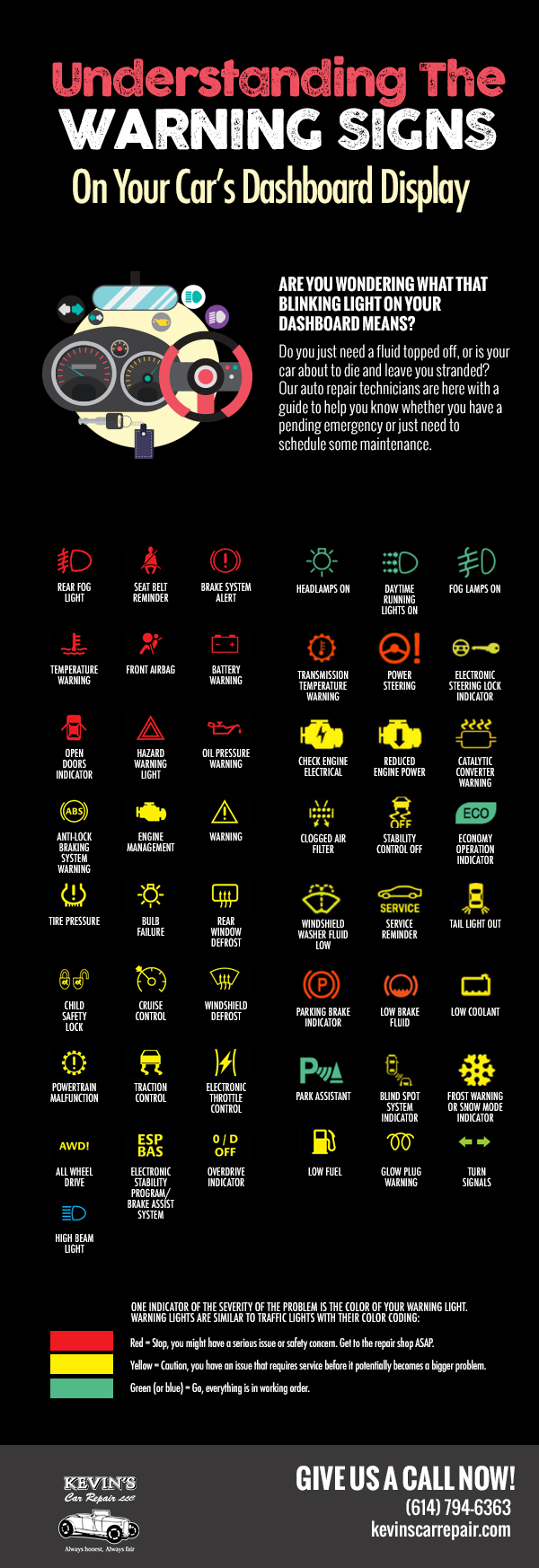Discover Just How To Translate Cars And Truck Caution Lights And Deal With Possible Concerns With Confidence
Discover Just How To Translate Cars And Truck Caution Lights And Deal With Possible Concerns With Confidence
Blog Article
Team Writer-Shah Park
When you're behind the wheel, those little caution lights on your car's control panel can be fairly puzzling. What do they suggest, and should you be concerned? Recognizing these signals is vital for your car's health, yet it does not have to be a daunting task. By translating the mystery behind each light, you'll be equipped to manage potential concerns effectively and keep your cars and truck running smoothly. So, next time a caution light flashes, do not panic - arm on your own with understanding and take control of the scenario.
Significance of Auto Caution Lights
Understanding the importance of your vehicle's caution lights is vital for maintaining your automobile's health and wellness. These lights function as your cars and truck's communication system, signaling you to potential concerns that can threaten your security on the road or cause costly fixings if neglected. By paying attention to these warnings, you can deal with problems early and protect against more damage to your car.
Neglecting alerting lights can lead to significant repercussions, such as engine failing, brake malfunctions, and even accidents. These lights are created to alert you of problems varying from reduced tire stress to engine breakdowns, giving you the chance to act before the situation worsens. On a regular basis examining and recognizing these cautions can conserve you time, money, and guarantee your safety while driving.
Along with maintaining you risk-free, responding without delay to cautioning lights can additionally help lengthen the life-span of your vehicle. By dealing with concerns early on, you can avoid small issues from intensifying into major repairs, ultimately conserving you money and time in the long run. Keep in mind, your automobile's warning lights are there for a factor - don't overlook them!
Common Warning Lights and Meanings
When it involves driving your automobile, understanding common caution lights and their meanings is crucial for your security and car upkeep. Below are a couple of common caution lights you may encounter:
1. ** Examine Engine Light **: This light suggests an issue with your engine. Maybe something minor like a loose gas cap or something a lot more severe like engine misfiring.
2. ** Battery Light **: This light signals a trouble with your auto's billing system. It can suggest a defective battery, alternator, or various other related components.
3. ** Oil Stress Light **: When this light begins, it means your engine may be running low on oil or experiencing low oil pressure, which can result in engine damage otherwise resolved promptly.
4. ** Brake System Light **: This light shows a concern with your braking system. rv brake repair could imply reduced brake liquid degrees or an issue with the brake system that requires immediate focus.
Understanding these typical warning lights will certainly aid you determine prospective issues at an early stage and stop more considerable problems later on.
Just how to React To Warning Lighting
On the occasion that a caution light brightens on your auto's control panel, it's vital to react immediately and suitably. When a caution light comes on, the first step is to consult your proprietor's manual to comprehend the specific problem shown by the light.
mechanic labor rate call for instant attention, while others may indicate a much less urgent issue. If the warning light is red or blinking, it's generally an indication of a severe problem that needs immediate activity. In such instances, it's suggested to pull over safely, turn off the engine, and look for expert assistance.
For yellow or orange warning lights, while they may not call for immediate attention, it's still important to resolve the hidden concern quickly to prevent additional damage. Routine upkeep and assessment can help prevent cautioning lights from coming on suddenly.
Final thought
To conclude, understanding your auto's caution lights is vital for preserving your car's health and wellness. By on a regular basis inspecting and responding to these warnings, you can address possible issues early and protect against pricey repair work or safety threats. Remember to consult your proprietor's guidebook for info on different caution lights and always take prompt activity for red or flashing lights. Remain positive and maintain your auto running efficiently!
